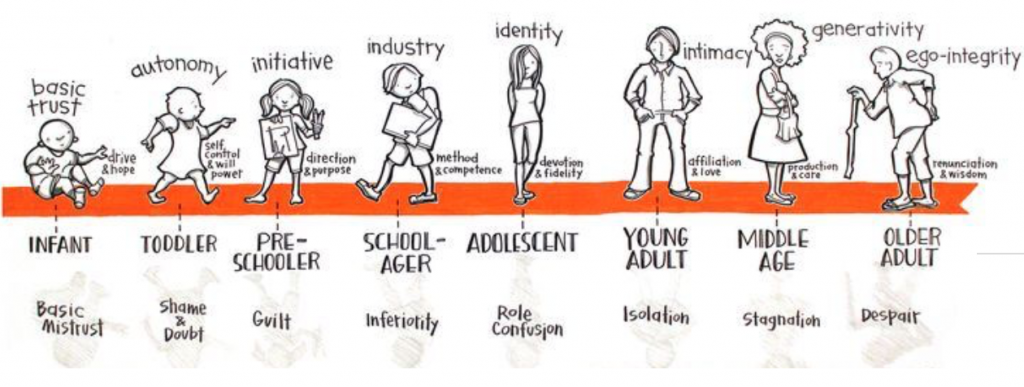It is important to know the stages of psychosocial development as this will help understand the emotional and psychological needs of a loved one who has lost a parent. Each stage of development will affect the way a person grieves the loss of a loved one.


3-5 years old: A child of this age is egocentric, meaning that they believe the world revolves around them (Raspa & Zalenski, 2016). The death of a loved one will be very focused on their own behaviour, meaning the child believes that they are responsible for the death. A child at this age may feel as though they have been abandoned, potentially interrupting age-appropriate development (Raspa & Zalenski, 2016). Emotions presented can vary from anger, frustration, guilt, and sadness. Unfortunately, a child of this age may not be developmentally prepared to handle such emotions (Raspa & Zalenski, 2016).
6-12 years old: At this stage, children are starting to learn basic skills, and can begin to attach cultural values to their actions (Raspa & Zalenski, 2016). Death of a loved one during this age can result in a child being reluctant to leave their home in order to protect themselves and others. For the school-aged child, a grief crisis such as the loss of a loved one may interrupt age-appropriate development and address issues that they are not capable of handling (Raspa & Zalenski, 2016). Children of this age may begin to lash out at other family members or behave in a specific way due to the belief that this could bring their loved one back (Raspa & Zalenski, 2016).
Adolescent, 13-19 years old: Adolescents, similar to younger children experiencing a loss may experience an interruption of age-appropriate activities since can make the child address issues that they are beyond their mental capacity (Raspa & Zalenski, 2016). Some adolescents will either become more mature and take on a more parental role to other siblings or regress and exhibit behaviour of children younger than them. Expression of grief and loss through body image and behaviour are common for this age group (Raspa & Zalenski, 2016). Adolescents often express their grief and loss issues through their body language and acting out behaviour. In addition, fixation with death can cause a decrease in school performance (Raspa & Zalenski, 2016).
Young adult, 20-40 years old: Young adults often times are devastated by the death of a loved one (Raspa & Zalenski, 2016). Grief for these individuals can be long-lasting and is influenced by the role the parent had in the individual’s life. The individual might blame themselves for not protecting their loved one better prior to their death (Raspa & Zalenski, 2016). A range of emotions may be experienced such as loneliness, anger, disbelief and anxiety. Their emotions might range greatly and include such things as loneliness, sadness, disbelief, anger, anxiety, etc. During this stage, individuals may become caregivers for siblings and or their parents (Raspa & Zalenski, 2016).
Middle aged adults, 40-60 years old: Middle-aged adults, can be negatively impacted by the loss of a loved one, similar to young adults (Raspa & Zalenski, 2016). These responsibilities can consist of dealing with grieving children, becoming a caregiver to their parent, and financial difficulties. Losing a parent during a disaster or crisis event can leave middle-aged adults with (often unfamiliar) responsibilities and roles, experiencing financial hardship, and/or dealing with grieving children (Raspa & Zalenski, 2016).
The elderly adult, 60 plus years: Depending on an individual’s age, they may have years of memories, accomplishments, and experiences with the individual that has died (Raspa & Zalenski, 2016). Individuals of this age have often experienced multiple losses throughout their lives such as jobs, social roles, health, and other loved ones. Although loss is something that is more common during this age, unexpected losses can still be detrimental to individuals. Often times the elderly lack the social support and financial stability which is crucial during this time (Raspa & Zalenski, 2016).